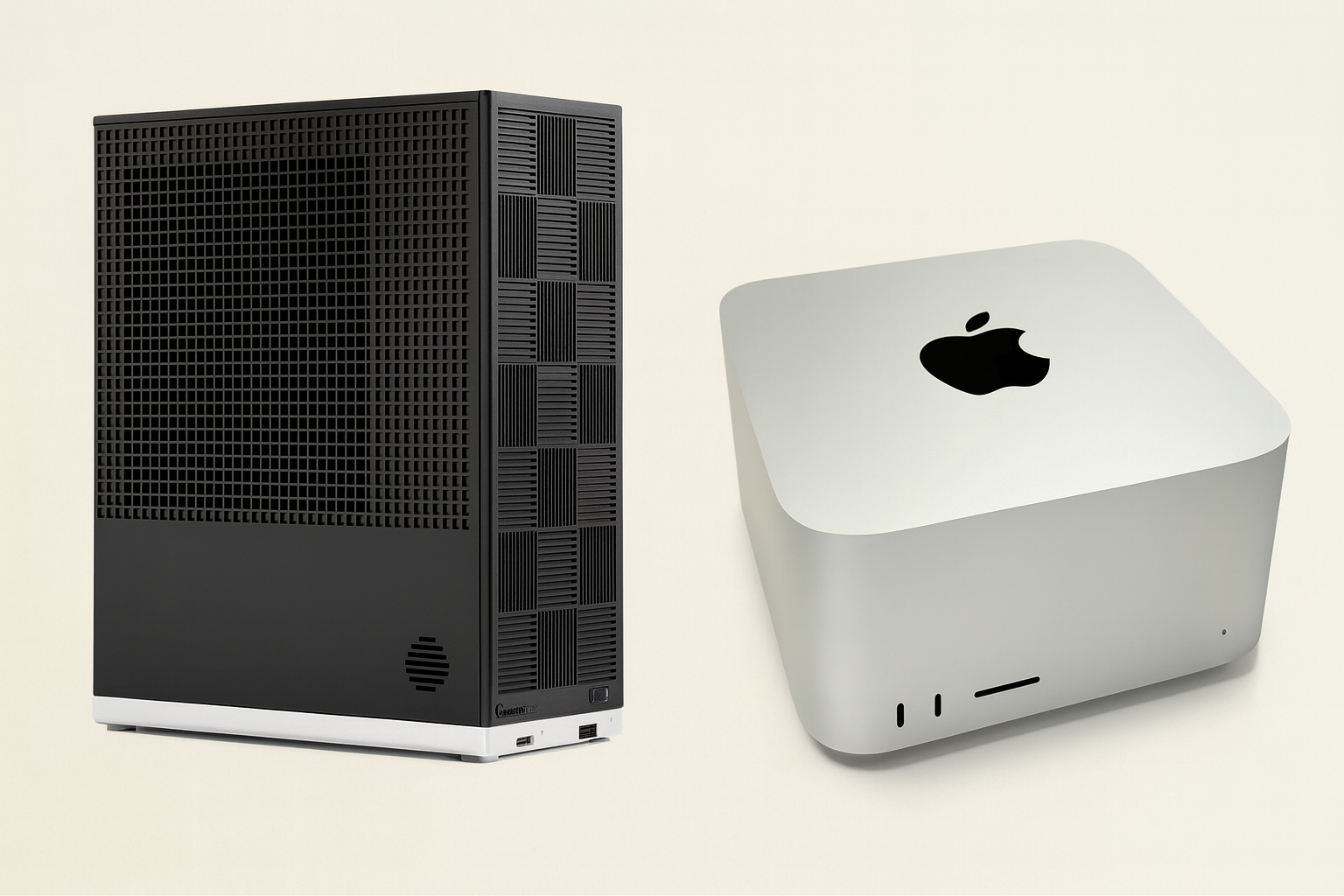
It’s 2025, and suddenly, everybody is an AI expert. Your neighbour, your dog walker, your dentist, they’ve all got “thoughts” on large language models. But if you’re actually serious about running one locally, whether it’s for privacy, raw speed, or just the thrill of feeling like you’re in a cyberpunk novel, you’re probably looking at two very different kinds of machines: the new Framework Desktop with AMD’s Ryzen AI Max+ 395 and the Apple Mac Studio with the M4 Max.
One is the scrappy, modular, right-to-repair champion that looks like it could survive being dropped down a lift shaft. The other is Apple’s sleek aluminium cube that could double as a high-end paperweight in a billionaire’s office. But both have something in common, they’re absolute monsters for AI workloads.
This isn’t a gaming shootout. While the Framework can game, you could get a stronger gaming rig for the same money. No, today’s cage match is all about LLM performance, because if you’re going to run your own personal ChatGPT at home, you want it to fly.
The Benchmarks That Matter
Forget synthetic bragging rights, these are the metrics that actually count when you’re hammering an LLM.
Geekbench 6 (CPU)
Framework Desktop (Ryzen AI Max+ 395): ~2,772 single-core / ~17,674 multi-core (noobfeed.com, notebookcheck.net)
Mac Studio (M4 Max): ~4,049 single-core / ~23,763 multi-core (topcpu.net)
Translation: The M4 Max wins on both single and multi-core, but the Framework is still very fast, especially considering its price.
Cinebench R23
Framework Desktop: ~2,189 single-core / ~33,054 multi-core (topcpu.net)
Mac Studio: ~2,281 single-core (+4%) / ~27,401 multi-core (~20% less multi-core) (topcpu.net)
Translation: The Framework actually beats the M4 Max in raw multi-core grunt, which matters when your AI model wants to chew through as many threads as possible.
Memory Bandwidth
Framework Desktop: ~256 GB/s LPDDR5x (theverge.com, pcgamer.com)
Mac Studio: ~546 GB/s LPDDR5x unified memory (en.wikipedia.org, topcpu.net)
Translation: Apple’s unified memory is ludicrously fast, but you’ll pay for it. To get the kind of RAM capacity you’d want for large models, you’re looking at Apple’s top-spec configurations, which come with a “luxury yacht” price tag.
The Cost Reality Check
Fully specced with 128GB RAM and a 2TB SSD, the Framework Desktop comes in around £2,300 (USD $2,600). That’s still a serious investment, but compared to a similarly specced M4 Max Mac Studio, it’s not even a fair fight. Apple’s offering will easily push you toward the £4,000 / $5,000 mark, and that’s before you add peripherals.
For LLM workloads, that price gap is hard to ignore. Unless you need Apple’s macOS ecosystem or absolutely maxed-out memory bandwidth, the Framework delivers a lot of performance for a lot less money, while also letting you swap parts out down the line.
The Verdict (and the Inevitable Existential Crisis)
So, which is the better LLM machine?
If you want raw multi-core power, modular upgrades, and a friendlier price tag, Framework is the smarter buy.
If you want insane single-core speeds, world-class memory bandwidth, and the Apple polish, Mac Studio delivers, at a cost.
Either way, you’re getting a desktop that can run local models like a dream. The real question isn’t “Which one should I buy?”, it’s “Why am I running AI locally in the first place?” Is it for privacy? For research? Or because deep down, you just like the idea of having a digital oracle humming away under your desk, ready to answer questions, write code, or compose haikus about your cat?